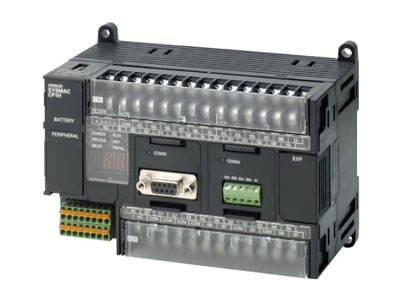How To Communicate PLC To Vfd?
Key Takeaway
To communicate a PLC to a VFD, first choose a communication protocol like Modbus or Ethernet/IP. Connect the hardware using appropriate cables. Configure the communication settings (baud rate, data bits, stop bits) on both the PLC and VFD. Program the PLC to send and receive data, defining which data to communicate, such as speed commands and status feedback. Finally, test the setup to ensure the PLC and VFD communicate correctly, allowing seamless control of the VFD by the PLC.
Basics of PLC and VFD Communication
Communicating between a Programmable Logic Controller (PLC) and a Variable Frequency Drive (VFD) is essential in modern industrial automation for precise motor control. The PLC acts as the central controller, executing pre-programmed logic to control various processes. The VFD adjusts the speed and torque of motors, providing energy-efficient motor control. Effective communication between these two devices enables synchronized operations, improved process control, and enhanced system efficiency. Understanding the basics of PLC-VFD communication is the first step towards integrating them successfully in an industrial setup.

Communication Protocols Used (Modbus, Ethernet/IP, etc.)
Several communication protocols facilitate PLC and VFD interaction, each offering distinct advantages. Modbus is a widely used protocol known for its simplicity and reliability, suitable for basic communication needs. It operates over serial or Ethernet networks and is easy to implement, making it ideal for straightforward applications. Ethernet/IP provides higher speed and more robust data exchange, making it perfect for complex industrial networks requiring rapid and reliable communication. This protocol supports a broad range of devices and offers advanced diagnostics, enhancing system performance and troubleshooting capabilities. PROFIBUS and PROFINET are other common protocols offering extensive compatibility and advanced diagnostic features. PROFIBUS is a fieldbus protocol widely used for efficient, real-time data exchange, while PROFINET, built on Ethernet, provides higher speeds and greater flexibility. When selecting the appropriate protocol, consider the specific requirements of the application, such as data transfer speed, network size, and the complexity of control tasks. By understanding these protocols, engineers can ensure seamless and efficient communication between PLCs and VFDs, optimizing industrial automation processes.
You May Like to Read
Setting Up Communication Between PLC and VFD
Setting up communication between a PLC and a VFD involves several essential steps. First, select the appropriate communication protocol, such as Modbus or Ethernet/IP, based on the application requirements and the capabilities of the devices. Ensure both the PLC and VFD support the chosen protocol. Next, configure the PLC and VFD settings, including baud rates, IP addresses, and communication parameters, ensuring they match and can recognize each other. Use suitable communication cables that adhere to the protocol’s specifications to physically connect the devices. In the PLC, develop a program that sends commands to the VFD, such as start/stop signals, speed references, and other control instructions. Finally, test the communication link by running the PLC program and verifying that the VFD responds correctly to the commands. Adjust settings as needed to ensure reliable communication. Proper setup and configuration are crucial for seamless communication, enabling effective control and monitoring of the VFD through the PLC, thereby enhancing system automation and efficiency.
Practical Examples of PLC-VFD Integration
Integrating a PLC with a VFD is common in various industrial applications. For instance, in a conveyor system, the PLC adjusts the VFD to regulate the speed of the conveyor belt based on the load detected by sensors. This ensures efficient handling and prevents overloading. In HVAC systems, a PLC-VFD setup controls fan speeds to maintain optimal airflow and energy efficiency, responding dynamically to temperature changes and occupancy levels. In manufacturing processes, PLCs manage multiple VFDs to synchronize motor speeds, ensuring precise control over assembly lines. This coordination is crucial for maintaining product quality and process efficiency. These integrations not only improve process efficiency and reduce energy consumption but also enhance overall system performance. By leveraging the capabilities of both PLCs and VFDs, industries can achieve more reliable and flexible control over their operations, leading to better productivity and reduced operational costs.
Troubleshooting Communication Issues
Communication issues between PLCs and VFDs can stem from various sources, such as incorrect settings, faulty connections, or incompatible protocols. To start troubleshooting, first, check all physical connections and ensure that all cables are securely attached. Next, verify that the communication settings on both the PLC and VFD match and are correctly configured. Utilize diagnostic tools to monitor the data exchange and identify any errors in the communication process. If the problem persists, refer to the device manuals or seek technical support for specific troubleshooting steps. It is also helpful to check for any firmware updates that might address compatibility issues. Regular maintenance, such as inspecting and cleaning connections, can prevent many communication problems. Additionally, documenting and regularly reviewing the configuration settings can help quickly identify and resolve discrepancies. By systematically addressing these potential issues, you can maintain reliable communication between your PLC and VFD, ensuring smooth operation and minimizing downtime.
Conclusion
Effective communication between PLCs and VFDs is vital for achieving precise control and efficiency in industrial processes. By understanding the basics, choosing the right protocols, and setting up the communication correctly, engineers can enhance system performance. Practical applications demonstrate the versatility and benefits of PLC-VFD integration, while troubleshooting ensures continuous, reliable operation. Mastering PLC-VFD communication not only improves control but also contributes to energy savings and operational efficiency in modern industrial automation systems.
